India has a renewable energy (RE) potential of over 24,000 GW, but even reaching the 7,000 GW required to achieve net-zero emissions by 2070 will require a holistic approach to addressing challenges such as land access, climate risks, land conflicts, and population density, according to a new independent study by the Council on Energy, Environment and Water (CEEW).
CEEW estimates that India will need a solar capacity of over 5,600 GW and a wind capacity of 1,800 GW to achieve net-zero emissions by 2070. The nation currently has an installed RE capacity of 150 GW, and up to 1,500 GW, the constraints are relatively manageable.
The study, ‘Unlocking India’s RE and Green Hydrogen Potential: An Assessment of Land, Water, and Climate Nexus’, highlights that deployment beyond 1,500 GW could face critical challenges as multiple constraints intensify, narrowing the runway to reach the net-zero target. Renewable energy, including solar, wind, and green hydrogen, is crucial to realise India’s climate goals, but scaling up these technologies will require strategic land use, improved water management, and resilient power grid infrastructure.
The CEEW study maps India’s RE and green hydrogen potential by analysing the entire country’s landmass and applying real-world constraints. It does this by using detailed 5×5 km grid cells, which offer a more practical assessment of what can actually be developed and where.
The study finds that population density significantly limits the realisation of India’s RE potential, with only 29% of onshore wind potential and 27% of solar potential located in areas with a population density less than 250 people/km2.
Land conflicts further restrict deployment, with only about 35% of onshore wind potential and 41% of solar potential located in areas free from historical land conflicts. However, earthquakes are less of a concern, as 83% of onshore wind and 77% of solar potential are located in low to moderate seismic zones.
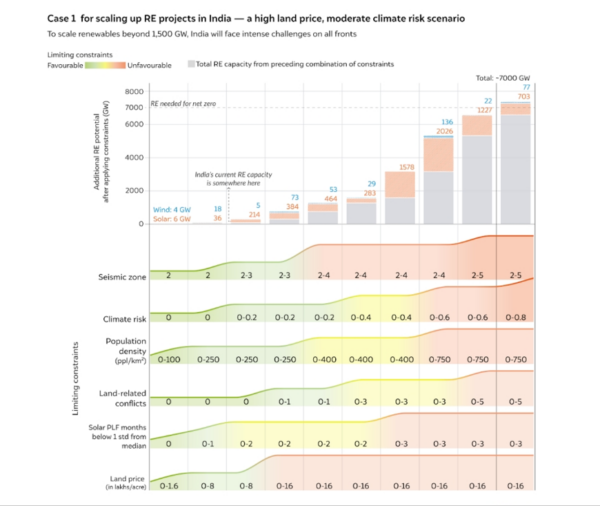
The CEEW study also identifies states with high unconstrained RE potential such as Rajasthan, Madhya Pradesh, Maharashtra, and Ladakh. Rajasthan (6,464 GW), Madhya Pradesh (2,978 GW), Maharashtra (2,409 GW) and Ladakh (625 GW) have significant low-cost solar potential, while Karnataka (293 GW), Gujarat (212 GW), and Maharashtra (184 GW) offer considerable wind potential.
Dr Arunabha Ghosh, CEO, CEEW, said, “India stands at a pivotal juncture in its energy transition. It has set out to do the near impossible: provide energy access to millions of people, clean up one of the world’s largest energy systems, and become a green industrial powerhouse. While our RE potential is vast, the road to net zero is fraught with challenges. From land conflicts and population density to the unpredictable but undeniable impact of climate change, every step forward will demand resilience and innovation.”
“The CEEW study, for the first time, goes into granular details of the county’s landmass to map out where we can build out renewable energy and green hydrogen projects while addressing the challenges of land, people, and compounding, non-linear climate risks. The scale of the task ahead is monumental, yet it is precisely this challenge that will define India’s legacy as a trailblazer for the Global South—a country that charts a low-carbon pathway to prosperity against all odds.”
The CEEW study highlighted that Odisha and Madhya Pradesh could emerge as key players in meeting India’s renewable energy ambitions in the coming decades. These states have the advantages of high RE potential backed by land banks and infrastructure to evacuate renewable power and manage seasonality.
Further, a considerable portion of India’s RE potential is in high-climate-risk and high-land-price areas—only 18% of onshore wind potential and 22% of solar potential are located in areas with low climate risks and low land prices, when looked at in isolation. However, the challenges to realising this potential increase too when other constraints such as population density, land conflicts and seasonality of solar power are factored in.
Hemant Mallya, Fellow, CEEW, said, “Land and water are critical resources for scaling up RE and green hydrogen in India. Prevention of desertification and innovative solutions to address land availability, such as agro-voltaics in horticulture and rooftop solar in dense Indian cities, will be essential. Moreover, as RE projects move into areas with higher climate risks, insurance companies could increasingly hesitate to provide coverage. Involving all stakeholders in the early stage of renewable project development and addressing climate risks will help ensure projects are commercially viable in the long run.”
The CEEW study also estimates that India could produce around 40 mtpa of green hydrogen at a cost lower than $3.5/kg. Water availability and management impact the cost of green hydrogen projects. This cost is expected to decrease further with advancements in electrolyser technology and more efficient RE systems. Low-cost green hydrogen could be produced in western and southern India, with Gujarat leading the production with an estimated potential of 8.8 mtpa at less than $3.5/kg, followed by Karnataka and Maharashtra with 5 mtpa each.
Finally, the CEEW study recommends a comprehensive approach that includes all stakeholders to ensure that India’s ambitious RE and green hydrogen targets are met sustainably and equitably. First, validating potential using higher-quality data and on-ground assessments is crucial, as current data may not fully reflect real conditions. States should establish graded land banks that consider RE quality, water availability, and proximity to infrastructure to ensure rapid project development. Evaluating and enhancing grid infrastructure and resilience are essential, particularly in regions with high RE seasonality, to support large-scale deployment. Additionally, revising water management policies to prioritise energy production and assessing the need for surface water storage will be vital to sustaining green hydrogen production and mitigating resource challenges.
This content is protected by copyright and may not be reused. If you want to cooperate with us and would like to reuse some of our content, please contact: editors@pv-magazine.com.
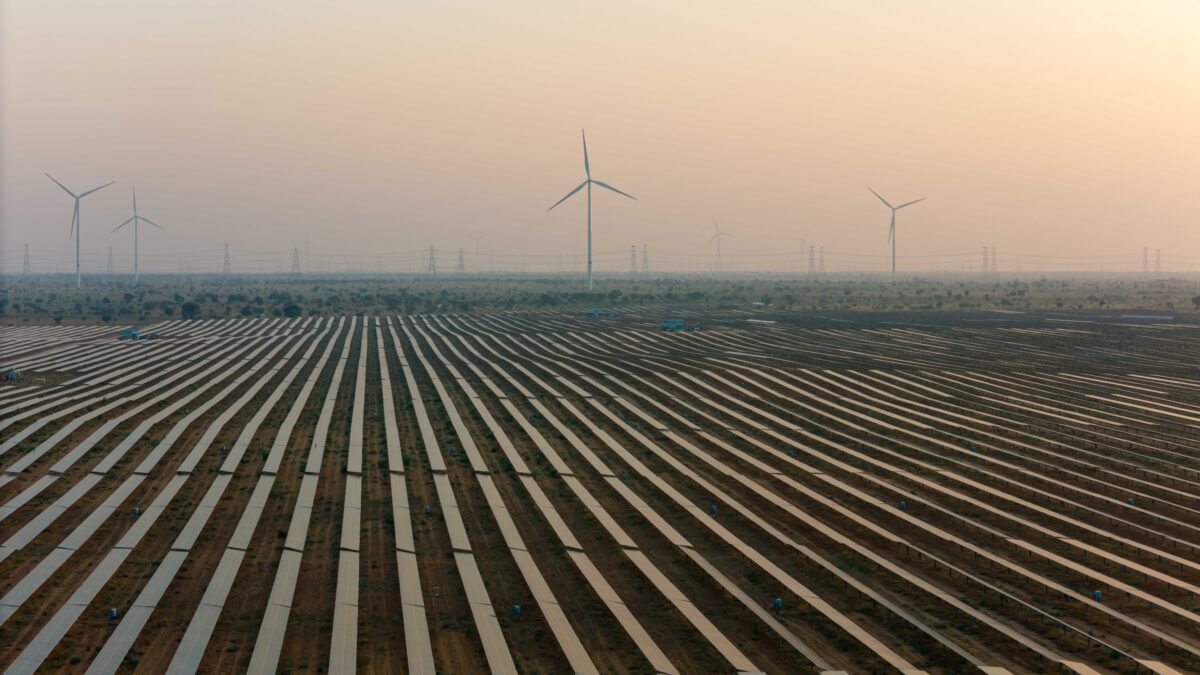
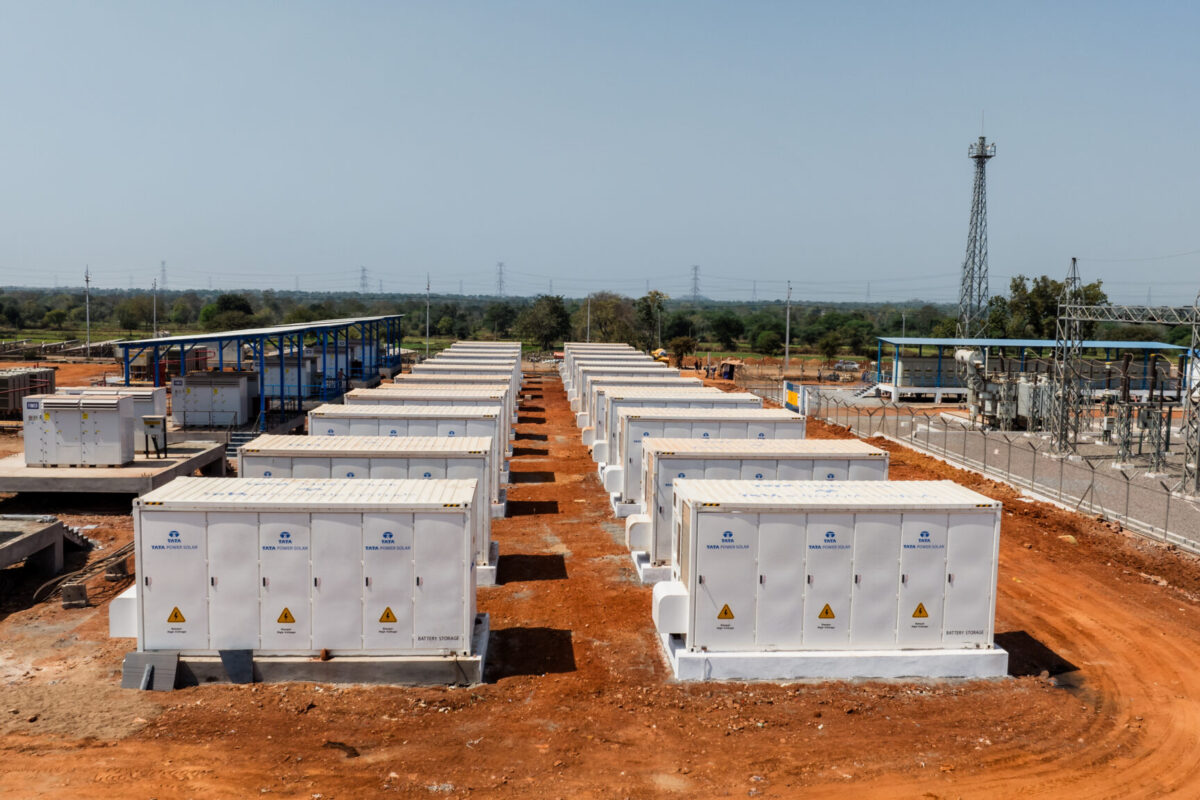



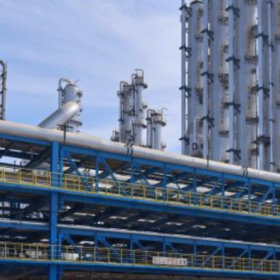
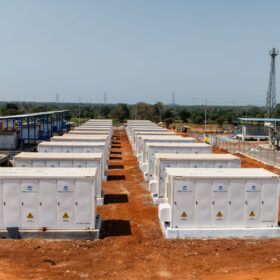
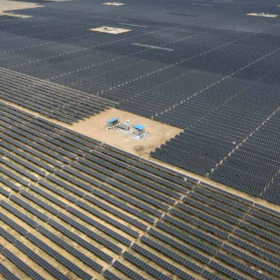

By submitting this form you agree to pv magazine using your data for the purposes of publishing your comment.
Your personal data will only be disclosed or otherwise transmitted to third parties for the purposes of spam filtering or if this is necessary for technical maintenance of the website. Any other transfer to third parties will not take place unless this is justified on the basis of applicable data protection regulations or if pv magazine is legally obliged to do so.
You may revoke this consent at any time with effect for the future, in which case your personal data will be deleted immediately. Otherwise, your data will be deleted if pv magazine has processed your request or the purpose of data storage is fulfilled.
Further information on data privacy can be found in our Data Protection Policy.